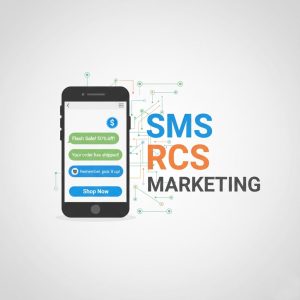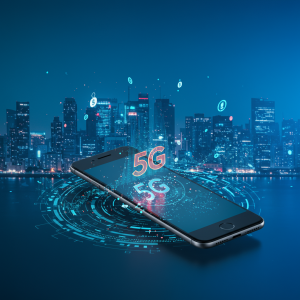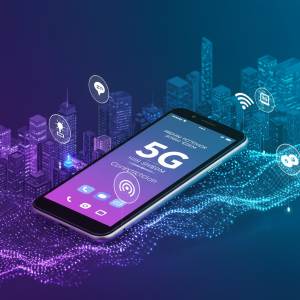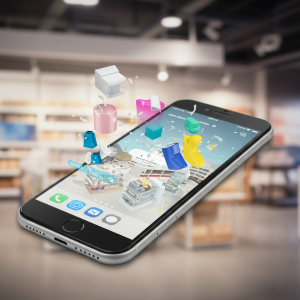Augmented Reality in Mobile Marketing: A Comprehensive Guide to Boosting Engagement

Augmented reality (AR) transforms mobile marketing by overlaying digital content onto the real world, enhancing engagement, conversions, and social sharing. Brands can leverage virtual try-ons, interactive demos, gamified campaigns, and location-based experiences. Success requires clear objectives, intuitive design, analytics integration, and promotion. AR is essential for future-ready mobile strategies.
In today’s crowded digital landscape, where consumers are constantly bombarded with advertisements and content from multiple channels, brands face the critical challenge of standing out and capturing meaningful attention. Traditional marketing tactics often struggle to break through the noise, making innovation essential for success. Augmented reality (AR) offers a powerful solution by seamlessly blending virtual elements with the real world, creating interactive and immersive experiences that can be accessed directly on mobile devices. By leveraging AR, brands can engage users in ways that are memorable, highly interactive, and capable of delivering unique value that static ads or conventional digital campaigns cannot achieve.
What Is Augmented Reality in Mobile Marketing?

Augmented reality (AR) is a technology that overlays digital content—such as images, animations, sounds, or interactive data—onto a user’s real-world environment in real time. On smartphones and tablets, AR leverages the device’s camera, motion sensors, and advanced tracking algorithms to map surfaces, detect movement, and accurately position virtual elements in the physical space. In the context of mobile marketing, AR offers brands a powerful way to bring products to life, tell immersive stories, and create highly interactive experiences that engage users far beyond what static images or traditional ads can achieve. By combining physical and digital worlds, AR enables marketers to showcase products, provide demonstrations, or deliver interactive campaigns that are memorable, personalized, and capable of capturing attention in ways conventional methods cannot. Learn more about Mobile User Engagement
Key Benefits of AR for Mobile Campaigns
Enhanced Engagement: AR experiences are highly interactive and immersive, capturing user attention far longer than traditional static or video ads. By allowing users to explore products or experiences in a dynamic, hands-on way, AR increases the time they spend with your brand, fostering deeper connections and stronger recall.
Improved Conversion: Features such as interactive try-before-you-buy functionality help users visualize products in their own environment, reducing uncertainty and hesitation. This not only boosts confidence in purchase decisions but also lowers return rates, creating a more efficient sales process and higher customer satisfaction.
Social Sharing: Novel and entertaining AR experiences naturally encourage users to share content on social media. Whether it’s a branded filter, a virtual try-on, or an interactive game, this organic sharing extends your campaign’s reach, increases brand visibility, and creates authentic word-of-mouth promotion without additional advertising spend.
Data Insights: AR platforms collect detailed, real-time data on user interactions, including engagement patterns, session duration, click behavior, and preferences. These insights allow marketers to understand how users interact with AR content, optimize campaigns, and tailor future experiences to better meet audience needs.
Brand Differentiation: By adopting AR early, brands position themselves as innovators and stand out from competitors. Offering cutting-edge, immersive experiences elevates brand perception, attracts attention from tech-savvy audiences, and creates a memorable impression that reinforces your market positioning.
Five Proven AR Marketing Strategies
To maximize ROI from AR, integrate it thoughtfully into your broader mobile marketing mix. Here are five strategies to consider:
- Virtual Try-On Features: Let customers visualize products—clothing, accessories, makeup—on themselves through the phone camera. Reducing guesswork boosts confidence and sales.
- Interactive Product Demos: Showcase complex products by overlaying 3D models and guided walkthroughs directly in the user’s environment.
- Location-Based Experiences: Combine AR with GPS to create scavenger hunts, guided tours, or local promos that drive foot traffic to physical stores.
- Branded Filters and Effects: Partner with social platforms to create custom AR filters or lenses that users apply to selfies and videos, generating organic buzz.
- Gamified Campaigns: Incorporate game mechanics—points, badges, leaderboards—into AR activations for higher engagement and repeat visits.
Step-by-Step AR Implementation Checklist
Launching a successful AR campaign requires strategic planning, attention to detail, and iterative improvements. Follow this checklist to ensure a smooth and effective deployment:
Define Objectives: Start by setting clear, measurable goals for your AR campaign. Determine whether your focus is on brand awareness, lead generation, boosting sales, or improving customer engagement. Identify key performance indicators (KPIs) that will allow you to track progress and evaluate success.
Select the Right AR Platform: Research available AR development platforms and software development kits (SDKs) such as ARKit, ARCore, or Vuforia. Consider platform features, device compatibility, cost, and scalability. Choose a solution that aligns with your technical requirements and target audience.
Design User-Centered Experiences: Prioritize creating AR experiences that are intuitive and easy to use. Focus on user-friendly interfaces, fast load times, minimal downloads, and seamless navigation. Whenever possible, implement web-based AR to reduce friction and make access effortless for users.
Create High-Quality Assets: Invest in producing high-quality 3D models, animations, and sound effects. Optimized digital assets ensure smooth performance across various devices and prevent lag or glitches that can disrupt the user experience.
Test Across Devices: Conduct extensive testing on multiple devices, operating system versions, screen sizes, and lighting conditions. Identify and fix technical issues early to deliver a reliable and enjoyable AR experience for all users.
Integrate Analytics: Embed tracking mechanisms to capture key engagement data such as session duration, interaction frequency, heatmaps, and conversion funnels. Analytics provide actionable insights that inform optimization and help measure ROI.
Launch and Promote: Roll out your AR experience with a well-planned promotion strategy. Utilize email campaigns, social media posts, in-app notifications, and paid advertising to attract traffic and encourage participation in the AR activation.
Analyze and Iterate: Continuously review performance metrics and gather user feedback. Use these insights to refine and improve your AR experience for future campaigns, ensuring that each iteration delivers higher engagement, better usability, and stronger results.
Real-World Case Studies
Several top brands have leveraged AR to deliver standout mobile marketing initiatives. Here are two examples:
IKEA Place
IKEA’s AR app lets users place true-to-scale 3D furniture in their homes before purchasing. This immersive try-before-you-buy feature reduced returns and lifted online sales by 25%.
Snapchat Lens Studio Campaigns
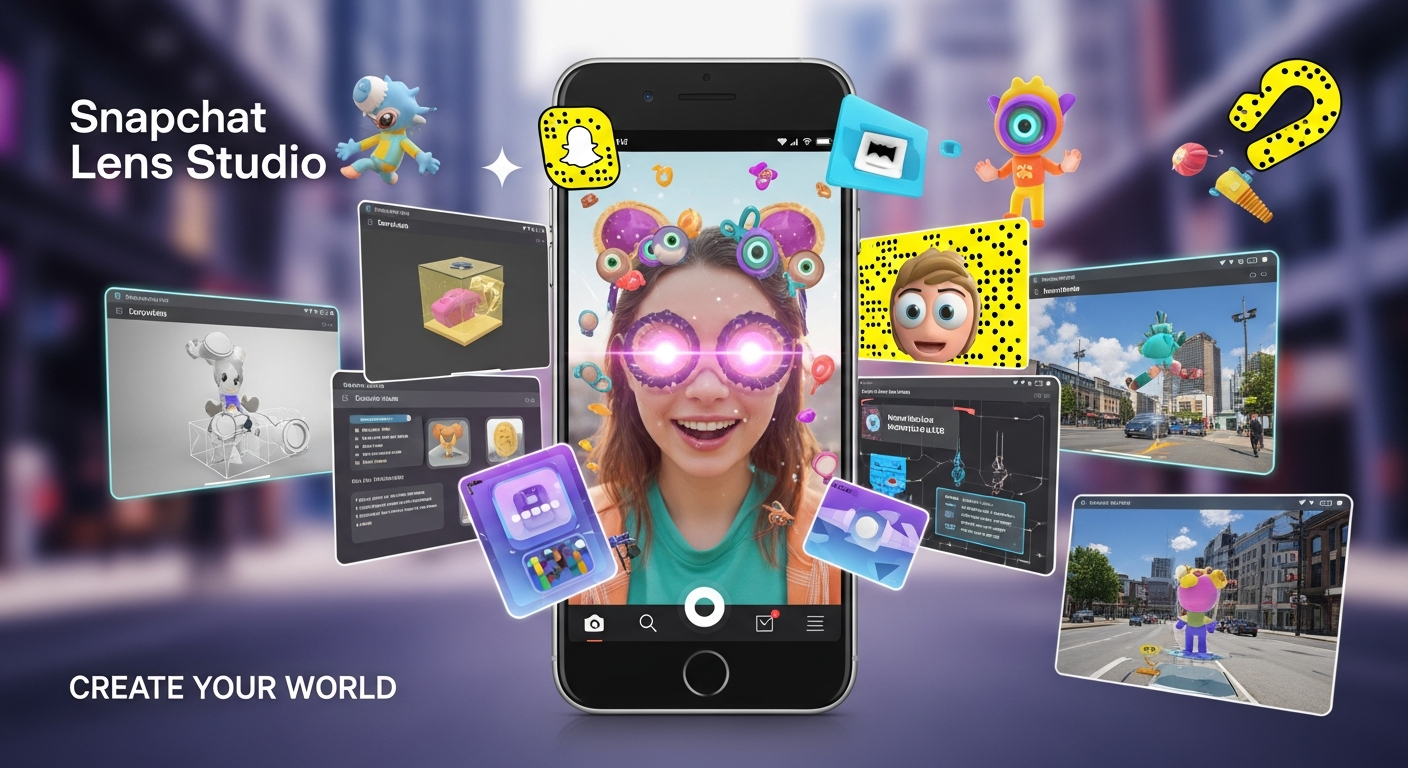
Several top brands have successfully leveraged Snapchat Lens Studio to create engaging AR experiences. For example, Taco Bell and Nike developed custom AR lenses and face filters that users could interact with and share on the platform. These branded lenses included both face filters and world lenses, allowing users to overlay digital content onto themselves or their surroundings.
The interactive nature of these campaigns encouraged widespread social sharing. Users enthusiastically engaged with the lenses and distributed them across their networks, resulting in over 100 million shares. This enormous organic reach not only amplified brand visibility but also reinforced brand recall, turning a simple AR experience into a powerful marketing tool that resonated with Snapchat’s highly engaged audience.
By combining creativity, interactivity, and shareability, Snapchat Lens campaigns demonstrate how AR can drive both engagement and awareness in a way that traditional advertising cannot match.
Common Challenges and How to Overcome Them
While AR offers big rewards, marketers may face hurdles. Here’s how to tackle them:
- Technical Complexity: Partner with experienced AR developers or choose no-code AR platforms to streamline creation.
- Device Fragmentation: Optimize assets for lower-end devices, and offer fallback content for unsupported models.
- User Adoption: Educate audiences with clear CTAs, tutorials, and incentives like exclusive discounts unlocked via AR.
- Privacy Concerns: Be transparent about data collection, comply with GDPR and CCPA, and secure user permissions properly.
Best Practices for AR Mobile Marketing
To maximize the impact of your augmented reality campaigns, follow these proven best practices:
1. Keep It Simple
AR experiences should be intuitive and easy to interact with. Avoid cluttering the interface with unnecessary animations, buttons, or instructions. Focus on creating quick, meaningful interactions that immediately demonstrate value to users. Simple, elegant designs reduce friction and increase engagement.
2. Focus on Value
AR should solve a real problem or enhance the user experience in a tangible way. Whether it’s virtual try-ons for clothing, interactive product demos, or educational AR experiences, the goal is to provide content that is genuinely useful or entertaining, not just novel. Experiences with clear benefits encourage users to engage longer and share more.
3. Optimize for Speed
Performance is critical. Compress 3D models, animations, and other assets to reduce load times. Use lazy loading and lightweight frameworks to ensure smooth experiences across devices, including older smartphones. Slow or glitchy AR experiences can frustrate users and lead to drop-offs.
4. Promote Cross-Channel
Maximize reach by embedding AR links and QR codes across multiple channels: emails, social media posts, websites, SMS campaigns, in-app notifications, and even offline materials like packaging or store signage. Cross-channel promotion ensures more users discover your AR content and increases campaign effectiveness.
5. Measure Impact
Track key performance indicators (KPIs) to understand campaign effectiveness. Metrics can include engagement rate, session duration, click-throughs, social shares, and revenue lift. Use analytics to determine which experiences perform best, optimize for underperforming elements, and iterate to improve ROI over time.
6. Test and Iterate
Conduct testing across devices, screen sizes, operating systems, and lighting conditions to ensure the AR experience is consistent and accessible. Collect user feedback to refine interactions, improve usability, and enhance overall satisfaction. Continuous iteration helps your AR campaigns evolve with user expectations.
7. Ensure Accessibility
Consider accessibility features such as captions, audio cues, and intuitive controls to make AR experiences inclusive for all users. This not only broadens your audience but also strengthens brand perception.
8. Integrate with Marketing Goals
Every AR experience should tie back to your broader marketing objectives—whether it’s boosting brand awareness, driving conversions, generating leads, or enhancing loyalty. Aligning AR campaigns with measurable goals ensures they deliver tangible business results.
The Future of AR in Mobile Marketing

Augmented reality is poised for explosive growth as technological infrastructure and consumer adoption continue to advance. The rollout of 5G networks will enable faster data transmission and lower latency, allowing AR experiences to be smoother, more immersive, and accessible in real time on mobile devices. Meanwhile, the proliferation of AR-enabled hardware, such as smartphones, tablets, and smart glasses, is lowering the barrier for brands to deploy interactive campaigns at scale.
Looking ahead, AI-driven personalization will become a key differentiator. AR experiences will adapt dynamically to individual users, delivering content, recommendations, and interactions tailored to their preferences, behavior, and past engagement. For example, fashion apps could suggest clothing combinations based on prior purchases, while retail brands could offer location-specific AR promotions as users move through a store.
Social commerce integration will further enhance AR’s value. Shoppable AR filters on platforms like Instagram, Snapchat, and TikTok will allow users to try products virtually and make purchases without leaving the app, blending engagement and conversion seamlessly. Messaging apps may also become AR-enabled storefronts, where users can explore products in 3D and complete transactions directly in chat.
Finally, early adopters who master AR marketing now will gain a significant competitive advantage. Brands that provide memorable, interactive, and personalized experiences will not only capture attention but also foster loyalty, drive conversions, and differentiate themselves in an increasingly crowded mobile-first landscape.
AR is no longer a futuristic novelty—it is quickly becoming a strategic imperative for brands seeking to stay ahead in the digital era.
Conclusion
Augmented reality has emerged as a game-changer in mobile marketing, offering unmatched levels of engagement and interactivity. By defining clear objectives, choosing the right tools, creating user-focused experiences, and measuring results, brands can unlock AR’s full potential. As technology evolves, integrating AR into your marketing mix is no longer optional but essential for staying ahead of the curve.
Ready to elevate your mobile marketing with AR? Start planning your first augmented reality campaign today, and watch engagement and conversions soar.
Frequently Asked Questions (FAQ)
1. What is AR in mobile marketing?
AR overlays digital elements—images, animations, or data—onto the real world through smartphones or tablets, creating interactive, immersive experiences for users.
2. How does AR improve conversions?
Features like virtual try-ons and interactive product demos reduce purchase hesitation, increase confidence, and lower return rates.
3. Which platforms support AR campaigns?
Popular AR platforms include ARKit, ARCore, Vuforia, and no-code tools that allow brands to create experiences for iOS and Android devices.
4. How can brands promote AR experiences?
Use email campaigns, social media, in-app notifications, paid ads, and website integration to drive users to AR activations.
5. What metrics should I track?
Track engagement rates, session duration, heatmaps, click-throughs, conversions, and revenue uplift to measure AR campaign performance.
6. What are common AR challenges?
Technical complexity, device fragmentation, low adoption, and privacy concerns are main challenges. Solutions include no-code platforms, optimization for devices, clear CTAs, and transparent data handling.
7. Is AR just a novelty?
No. AR adds real value by solving problems, providing information, enhancing entertainment, and creating memorable brand experiences.

